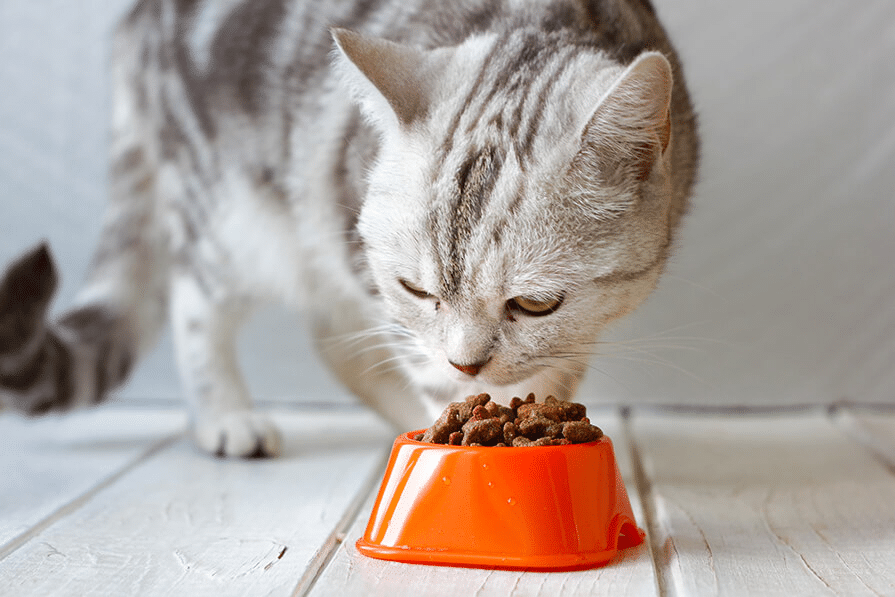Every cat owner should consider proper feeding and nutrition. To meet health requirements, you need to make sure you follow them. Furthermore, you should also ensure that your cat does not overeat, since obesity can cause more significant health problems. The “free feeding” method involves allowing the cat to eat whenever they wish, while the “portion control” method involves feeding the cat more than once per day. You can ensure your cat gets the nutrition it need every day by following a feeding schedule and monitoring its weight closely.
How should cats be fed? The needs and requirements of every cat are pretty much the same as those of a human being. Among the questions you might ask are how much to feed a cat, how often to feed it, and what kind of food to give it. Your cat’s feeding schedule can be tailored according to its natural habits and physical needs if you know the basics of feline habits and needs.

Source: google.com
The following are a few things you should know about cats:
- The cat has a habit of following the same routine. Your cat will feel more secure if you have a consistent feeding routine.
- After eating, cats usually become hungry 8-10 hours later. One or two feedings per day are generally sufficient for your cat.
- Symptoms of the illness include sudden loss of appetite in cats.
- The feeding requirements of kittens differ from those of adult cats.
- Depending on the cat, some can be finicky. Depending on your cat’s eating habits, you may need to combine wet and dry food, switch food brands, and make adjustments.
- Cats need different amounts of calories per day based on their weight. You can ensure your cat is eating healthy by referring to a cat feeding schedule chart.
What Is The Recommended Feeding Frequency For Cats?
Do cat owners need to feed their pets regularly? It would depend on many factors, such as your cat’s age, health, preference, and habits.

Source: google.com
The age of your cat
To support their growth, kittens need more food per pound of body weight than adult cats, so they should be fed frequently throughout the day. According to Francis Kallfelz, DVM, PhD, professor of nutrition at Cornell University College of Veterinary Medicine and board certified by the American College of Veterinary Nutrition, kittens may require three meals a day up to age six months. Two meals daily will be sufficient for most cats from six months to maturity.”
Cats should be fed once or twice a day once they become adults, at about one year old. Feeding senior cats should remain the same until they are at least seven years old. Dr. Kallfelz advises cats to feed once a day once they reach adulthood, provided they are healthy and don’t have any disease problems.
Needs specific to health
If your cat has a health condition, diet and feeding need to be adjusted. When diabetic cats receive insulin, veterinarians often advise feeding them. Cats may need finer kibbles or wet canned food to facilitate chewing if they experience gum or mouth problems. If your cat falls ill or has a health condition, your veterinarian will be able to give you recommendations on how to feed your cat.
Preferences for food
There may be a question in your mind about whether you should feed dry cat food or wet food. There are advantages to both types of food. You can mix wet and dry cat food for a healthier, well-rounded diet for your cat. Your pet may also enjoy the varying textures. It is also essential to consider that your cat may prefer one type over another.
Certain portions should be fed to your cat at specific times of the day. Considering your cat’s eating habits, you can schedule feedings according to your schedule. Your cat can become obese if food is left out all day or if you “free feed” your cat. If your cat begs for food between meals, it might be a good idea to provide treats or snacks.
By feeding your cat portion-controlled meals, you can immediately monitor your cat’s eating habits and discover health problems. Your cat may need to be checked by the vet to see if his appetite changes or if he guards his food or speed-eats. Meal-feeding is also easier for administering medicine to your cat if it’s sick.
Various Methods Of Feeding
Free-choice
Owners and cats alike enjoy this method of feeding their cats. Cats are free to graze on their food whenever they want, which is known as free-choice feeding. Due to their preference for small meals throughout the day, cats usually like it. Owners appreciate it because it requires little effort, which is particularly useful if you work long or irregular hours. It is best to feed free-choice dry food since it tends to spoil less quickly. It is not the best method for cats who love food since free choice can often lead to obesity.
Portion-controlled
It is often beneficial to some portion control for cats, like humans with a ‘healthy appetite’. Feeding a cat according to his daily recommended amount of food involves measuring it out and giving it either in one or two meals. It is recommended that you leave around 8-12 hours between meals if you decide to have two meals a day. To use this method, you must be available at the exact times each day to serve meals, which is particularly useful for cats who need to lose weight.
Timed-feeding
If you want to time feed your cat, you’ll need to be more committed, and your cat may protest! Using this method, you can get an idea of how much food your cat consumes and help combat overeating. Your cat receives two meals daily depending on the amount of food they need, but only for 30 minutes at a time. If there are any leftovers, you remove them once the allotted time has expired. Initially, the idea of not being able to graze all day may seem rude to your cat, but they will soon get used to it.
Check Cat Feeding Chart by Jess Caticles – Etsy for printable feeding schedules.
Conclusion
It is entirely up to you when and how you feed your cat, however, if you have a cat that wakes you up early, feeding them late at night should stop those early morning awakenings. Additionally, it would be best to spend some time bonding with your cat before giving them their final meal for the day (or their only meal), such as petting, brushing, playing, or cuddling. The objective is to avoid your cat only seeing you as a food source so they don’t cling to you in the mornings. When feeding your cat, choose times of the day when you and the rest of your family are less chaotic. Ideally, you should feed your cat before your children are up or wait until later in the day if you are busy getting them ready for school or work – remember, routine, routine.
FAQs
Do cats need to be fed early or late at night?
Make a schedule that works for you.
If you have a constant workday routine, you can provide one in the morning and one in the evening. A late-night or early-morning feeding session may be more convenient for you when your schedule is less stable, and your way is a little more chaotic.
Is it a good idea to feed my cat at night?
Cats eat one or more daily meals, depending on their family’s schedule. Approximately 12 hours apart, cats should eat two meals a day. An alternate schedule that includes breakfast, lunch, afternoon, dinner, and bedtime is equally significant.
Is it common for cats to sleep after eating?
The average cat sleeps between 13 and 16 hours a day. Sleeping after each meal conserves energy because meat is a rich energy source. Whenever you see a kitten sleeping, remember that they’re not lazy.
